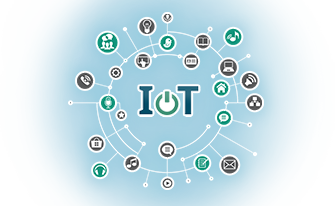WHERE TRANSPORTATION AND ENERGY MEET AND HOW IT IS CHANGING CITIES
November 13, 2017

TRANSPORTATION ELECTRIFICATION
EVs represent one of the ingredients of the ACES (Autonomous, Connected, Electric, Shared) concept introduced Dr. S. Heck of Stanford University – the ongoing transformation of vehicles and how they will be used, clearly affecting many aspects of urban life.
EVS AS MOBILE BATTERIES
Another way of looking at EVs – they are mobile storage devices and, in fact, can also discharge energy into the grid and offer other energy related services that are important to grid operators. Imagine an EV fleet operator with possibly hundreds of vehicles offering power at high load times, for a price. It is not surprising that EVs are viewed as a distributed energy resource (DER), joining other DERs such as solar panels and wind turbines, but with more flexibility and mobility.
Obviously, EVs will not work without the requisite chargers; but in contrast to traditional internal combustion engine (ICE) vehicles, which can only refuel at public gas stations, EVs get charged at home, at work, in public parking lots, on the curb (from smart light poles) and at public charging stations.
SMART AND CONNECTED CHARGER
EV chargers are on the way to becoming ubiquitous and a very common IoT edge device. Driven by recent standardization efforts they are being transformed into Smart and Connected devices that not only control power flow, but also serve as data hubs.
Comparing chargers to gas pumps is no longer appropriate (or accurate); chargers are not just “power faucets,” they can have significant information processing and analysis capabilities and have multiple high-level connectivity options to various entities. Clearly, the charger talks to the EV (mostly over power line communications, PLC), but at home, for example, the charger can talk to the Smart Home Energy Management System (EMS) that views the EV as an additional smart appliance (albeit one that can double a family’s energy bill). In fact, we have created a “modular brain” (a HW module with embedded SW) that transforms the “dumb” charger to a smart and connected one.
WHAT KIND OF CHARGERS ARE WE TALKING ABOUT?
It is important to understand the power requirements for chargers, especially since chargers come in different flavors. Basically, the EV driver would like to charge to some level (say 80% full) and complete charging by some prescribed time. These requirements depend on where and when charging occurs.
If you are charging at home, overnight, you have plenty of time to charge before you leave the following morning and fully charge in a few hours. For example, In Europe a 7.7 kW home charger can fully charger a 25-kWh battery in around 3 hours. A similar argument applies to an office building where you can charge your EV while at work. Note that EVs in an urban setting typically will not drive more than 100 km a day, and therefore urban drivers will likely own EVs with smaller batteries.
However, when traveling on a highway, the EV driver is likely to own an EV with much larger range between charges and therefore a much larger battery. The driver would also like to charge quickly, say in 15 minutes; the combination of larger batteries and the requirement to charge quickly, result in the need of high-power chargers. Current fast chargers are typically 50 kW, but many vendors are already offering over 100 kW chargers and some have announced 350 kW chargers (at this point, there are actually no vehicles or batteries that can handle chargers as powerful as these). But just think, a highway charging station location with five 100 kW chargers requires a whopping 0.5 MW power connection.
Clearly, EVs require significant infrastructure and utilities need to invest in upgrading the grid; when EVs become pervasive, one way to defer these investments is to be smart about how you charge. We will need to implement smart charging based on data collection and analytics.
EV CHARGERS ARE DATA HUBS
As EV penetration is growing all over the world, the corresponding network of EV chargers is also growing and these intelligent edge devices have access to a wide variety of data, both through “direct sensing” (measuring power, voltage, current, etc., during charging) and through connectivity to “adjacent systems” (e.g., Smart Home EMS info). This represents a huge opportunity for data analytics, especially if one can aggregate data from a large number of chargers deployed over a wide area such as a city. The resulting charging and energy insights on where, when, how much, context (under what circumstances), and price paid are valuable to different stakeholders including the consumer, grid operator, municipality and others.
For example, a critical grid integration function is Smart Charging – optimizing charging schedules for large numbers of EVs to avoid overloading parts of the grid but at the same time meet EV driver preferences. These calculated optimized schedules can then be used to orchestrate the actual power delivery.
THE VALUE OF ENERGY DATA FOR CITIES
This type of Energy Data service (EDaaS) is of value to cities. In the age where Smart Cities also implies sustainable, clean and green; knowledge of how citizens are using the power infrastructure is valuable. It can help cities understand what potential economic incentives can be used to encourage citizens be more flexible with their energy consumption; it can point the way to prudent and informed investing in renewables; it can enable longer term planning of urban infrastructure upgrades. This is especially true for Municipally- or City-owned utilities.
Additionally, the relatively new concept of microgrids – standalone, limited extent power grids – built to support communities, campuses and the like, has become a reality. Powered primarily by local DER with an option to connect and disconnect (known as ‘islanding’) from the main grid, microgrids may emerge as the natural solution for some cities. Using the energy and data resources (such as EVs, EV chargers, DER management systems, etc.) intelligently will be a key enabler.
WHAT THIS MEANS FOR OUR CITIES
Transportation electrification is bringing some major changes with it both from a transportation perspective and from an energy perspective. Many cities, offering good public transportation (also transitioning to electric buses), vehicle sharing options and other technologies, are leading to a reduction in vehicle ownership. In parallel, the drive for ‘clean’ and ‘green’ is encouraging people towards producing their own energy to power their homes and their EVs. Building managers are also filing their roofs with solar panels to support and enhance their smart building management systems.
Future cities may be populated by fleets of autonomous EVs that arrive to pick you up in an Uber-like fashion. Charging these fleets will be scheduled in an optimal, data-driven way, using the grid in the most efficient way, as well as offering discharging services to the grid during peak load times.
It turns out that transportation and electricity have become some of the most exciting domains from both a business and technology perspective. Some of the leading IoT use cases come from Smart Grid (e.g., Smart Meters as Things) and Intelligent Transportation Systems, or ITS (think V2X technologies such as V2I and V2V). The EV and the related infrastructure and ecosystem, together with the other pillars of the ACES concept, will reshape our cities.
